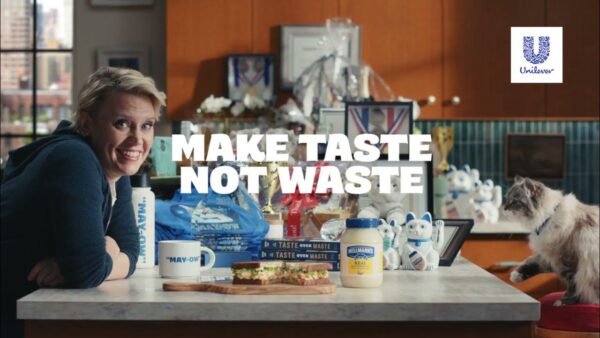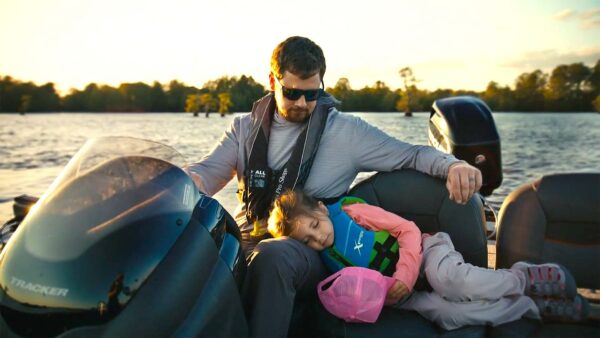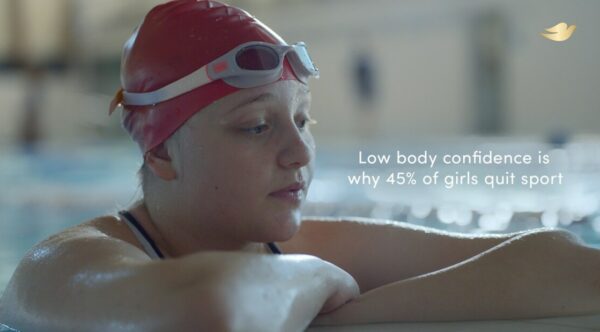Back in 2020, I noticed an interesting trend: More and more brands were using their extremely expensive Super Bowl spots to highlight social impact work. The ads ranged from effective and powerful, to well-intentioned and lackluster, to complete fumbles, which inspired me to write a piece rating the efforts.
Thus began my annual analysis of cause marketing in the Super Bowl.
Over the next few years, social impact was a staple in major blue chip brands’ clever ads. Companies like Tide, Olay, Michelob Ultra, Microsoft, Google, Salesforce, and a host of car companies looked not just to sell products – but also to champion a cause. This wasn’t hugely surprising given the country was navigating a global pandemic, major political upheaval, and monumental movements for social justice.
Things changed last year.
2023’s Super Bowl marked a sharp decline in cause marketing. Instead of impact, the focus was largely fixed on lighthearted entertainment – ads featured celebrity appearances, silly songs, and heartwarming stories.
This shift was a surprise – and concern – to many in our industry. We worried it reflected an overall decrease in social impact interest and work. Super Bowl spots are “one of the best ways to take the temperature of the general public’s frame of mind. Advertisers – seeking to engage and inspire the largest possible audience – are transmitting the message that they believe is most ripe for the moment,” I wrote.
This year, the number of cause-based ads during the big game declined even further. Here’s my new take: Cause marketing might be on the decline, but the work itself isn’t going anywhere.
Over the course of two decades in social impact, I have come to understand how corporations think and feel about this work. I know firsthand that social impact remains in the picture, even if brands are making the calculation that impact-centered ads aren’t worth the spend. Instead of a negative trend, it is probably a good thing. By way of example – in past years, car companies automatically hit cause marketing notes when advertising their EVs (electric vehicles). This year’s EV spots opted instead for laughs (BMW), and to tug at the heartstrings (Kia). This isn’t because car companies are shying away from sustainability – quite the opposite. More brands have EV cars in their fleets than ever before, making the sustainability “focus” much harder to sell. Now these environmentally friendly cars are really just … cars, and normalizing that is a clear win for purpose.
All that said, there were still a few brand spots that hit on impact, and a number of notable ads from nonprofits that did the same. Here’s our take on who scored and who fumbled.
| Criteria | Points |
| Fit: Does the cause make sense for the brand? | /3 |
| Partnership: Does the brand have a substantiated partnership connected to this effort? | /2 |
| Activation: Does the ad inform and activate viewers? Do people care more about the cause because of the ad? | /2 |
| Long-term: Does the brand have a long-term relationship to the cause? Will this relationship further the cause? | /2 |
| TOTAL | /9 |

FIRST DOWN: HELLMANN’S MAYO CAT
This is the third year we’re writing about Hellmann’s – and not much has changed. While the “Make Taste Not Waste” campaign ladders up to an important issue (food waste), which makes sense for the brand, the ads continually seem to prioritize entertainment over impact. A bit of digging reveals that Hellmann’s is donating $100,000 to Food Recovery Network, which is great, but it took some sleuthing to ID.
We appreciate the long-term commitment to the cause (truly!), but still believe that Hellmann’s could do more to move the needle on food waste all year long.
| Criteria | Points |
| Fit: Does the cause make sense for the brand? | 3/3 |
| Partnership: Does the brand have a substantiated partnership connected to this effort? | 1/2 |
| Activation: Does the ad inform and activate viewers? Do people care more about the cause because of the ad? | 0/2 |
| Long-term: Does the brand have a long-term relationship to the cause? Will this relationship further the cause? | 1/2 |
| TOTAL | 5/9 |

FIELD GOAL: BASS PRO SHOPS’ MAKING MEMORIES ON THE WATER
We continue to appreciate Bass Pro Shops’ dedication to sustainability, a fitting cause for the outdoor sports brand. While perhaps not direct cause marketing, this year’s spot ended with a clear CTA for viewers to “join the club” to support their conservation efforts. The associated site substantiates the work.
| Criteria | Points |
| Fit: Does the cause make sense for the brand? | 3/3 |
| Partnership: Does the brand have a substantiated partnership connected to this effort? | 1/2 |
| Activation: Does the ad inform and activate viewers? Do people care more about the cause because of the ad? | 0/2 |
| Long-term: Does the brand have a long-term relationship to the cause? Will this relationship further the cause? | 2/2 |
| TOTAL | 6/9 |
TOUCHDOWN!: GOOGLE’S JAVIER IN FRAME
By far one of the most meaningful spots this year, Google clearly illustrated its dedication to accessibility. Javier in Frame tells the story of a sight-impaired man documenting his life. From falling in love to starting a family, Google Pixel’s AI feature ensures he’s able to capture a photo of every moment.
Designed to be “the world’s most inclusive camera,” Guided Frame uses “a combination of audio cues, high-contrast animations and haptic (tactile) feedback to help people who are blind and low-vision take selfies and group photos.”
We especially appreciate that Javier in Frame was led by director Adam Morse. Having lost his eyesight at age 19, Morse not only contributed time to improve the Guided Frame tech – but also brought a uniquely important perspective to the spot.
Sometimes companies “give back” with funds. Sometimes, the most value-add thing they can do is reconsider the very products they sell. Here, Google did the latter, and we think they nailed it.
| Criteria | Points |
| Fit: Does the cause make sense for the brand? | 3/3 |
| Partnership: Does the brand have a substantiated partnership connected to this effort? | 1/2 |
| Activation: Does the ad inform and activate viewers? Do people care more about the cause because of the ad? | 2/2 |
| Long-term: Does the brand have a long-term relationship to the cause? Will this relationship further the cause? | 2/2 |
| TOTAL | 8/9 |

TOUCHDOWN!: DOVE’S Hard Knock Life
According to Dove’s ad, low self-esteem drives a staggering 45% of girls to quit playing sports by age 14, a particularly concerning stat when considering the importance of sports in everything from physical and mental health to college access.
The spot ends with a clear CTA, driving awareness for the Body Confident Sport program – a first-of-its-kind, scientifically-proven set of free tools developed by Dove and Nike to help coaches to build body confidence in girls. Dove has also partnered with athlete Kylie Kelce to bring attention to the program.
This was a score in our books – the ad was effective and made sense as a game day spot, the double-click effort was substantial (and open source, no purchase necessary!), and viewers have a clear way to get involved.
| Criteria | Points |
| Fit: Does the cause make sense for the brand? | 3/3 |
| Partnership: Does the brand have a substantiated partnership connected to this effort? | 1/2 |
| Activation: Does the ad inform and activate viewers? Do people care more about the cause because of the ad? | 2/2 |
| Long-term: Does the brand have a long-term relationship to the cause? Will this relationship further the cause? | 2/2 |
| TOTAL | 8/9 |
TOUCHDOWN! + TWO-POINT CONVERSION: PFIZER’S HERE’S TO SCIENCE
Pfizer opted to use its first-ever Super Bowl ad to highlight its fight against cancer.
“Here’s to Science” overlayed famous scientific figures with Queen’s “Don’t Stop Me Now.” Beginning in a historic academic library, the spot zoomed through artwork featuring luminaries like Albert Einstein, Sir Isaac Newton, Rosalind Franklin, and Archimedes, all of whom come to life to sing along.
The ad drives viewers to its LetsOutdoCancer site, which outlines the company’s related work and proven impact.
On the heels of a recent acquisition of cancer-focused biotech company Seagen Inc., cancer has become a top priority for Pfizer. The company is doubling its oncology capacity, developing 50 new programs and 27 new molecular entities, and dedicating roughly 40% of all research and development to cancer. Pfizer also announced a three-year, $15 million partnership with the American Cancer Society to target breast and prostate cancer in underserved communities.
| Criteria | Points |
| Fit: Does the cause make sense for the brand? | 3/3 |
| Partnership: Does the brand have a substantiated partnership connected to this effort? | 2/2 |
| Activation: Does the ad inform and activate viewers? Do people care more about the cause because of the ad? | 2/2 |
| Long-term: Does the brand have a long-term relationship to the cause? Will this relationship further the cause? | 2/2 |
| TOTAL | 9/9 |

TWO GREAT PLAYS: NFL FOUNDATION’S BORN TO PLAY AND CHARACTER PLAYBOOK
The NFL’s “Run with It” was among our favorites last year – but it did leave us wondering what the organization actually does to advance women in sport (beyond the inspirational ad).
This year, both of the NFL’s cause marketing spots are not only inspirational – but clearly fit into a much larger effort.
Born to Play shined a spotlight on the International Player Pathway program, which is part of a broader long-term commitment from the NFL to engage with and enable athletes of all ages and backgrounds to find, play, and thrive in the sport.
At the same time, the Character Playbook is combating bullying and promoting mental health support for children across the country, offering digital education resources at no cost to K-12 schools nationwide. As big data fans, we appreciate that the site includes clear metrics to back up their impact.
| Criteria | Points |
| Fit: Does the cause make sense for the brand? | 3/3 |
| Partnership: Does the brand have a substantiated partnership connected to this effort? | 1/2 |
| Activation: Does the ad inform and activate viewers? Do people care more about the cause because of the ad? | 2/2 |
| Long-term: Does the brand have a long-term relationship to the cause? Will this relationship further the cause? | 2/2 |
| TOTAL | 8/9 |
There were a few brands whose ads and inspirational messages aligned well with social impact – but they didn’t take it all the way down the field. We wish Poppi, Snapchat, and Copilot (Microsoft’s AI product) went a little further. We’ll be following those companies to see how they lead in public health, mental health, and economic advancement and education respectively.
Finally, we couldn’t write a piece about social impact in Super Bowl ads without mentioning one particularly surprising spot. Chinese e-commerce platform Temu aired the same ad three times, prompting viewers to “shop like a billionaire” with unchecked consumerism thanks to their (suspiciously) low prices (a dress for $8.99? Shirts for $4.99?!). Fast fashion is notoriously damaging to the environment and has major implications for human rights. Temu is currently under investigation by congress, having been accused by a House committee of using forced labor, and receives ongoing widespread criticism for its lack of sustainability transparency. This spot left us scratching our heads.
Net net – social impact keeps evolving, so it’s not surprising that the ads downstream from our work do too.
Emily is the founder and CEO of Ethos Giving. Equal parts head and heart, Emily has spent her career working for social change. With deep experience in government, advocacy, nonprofit, corporate, and philanthropic work, Emily has a unique ability to envision and steward philanthropic contributions that maximize benefit and value for all.

















































